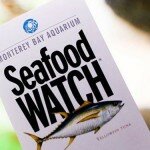Welcome to my “Raw Foods” page. Here you will find information about raw foods and a list of all my raw food recipes.
A raw food diet consists of uncooked, unprocessed and often organic foods that have not been heated above 115 degrees. According to raw foodists, enzymes are the life force of a food, helping us digest and absorb nutrients. The theory follows, if we over consume cooked food our bodies are forced to work harder by producing more enzymes. Over time a lack enzymes from food is thought to lead to digestive problems, nutrient deficiency, accelerated aging and weight gain. Most raw foodists are vegans who eat no animal products, but some do consume raw eggs and cheese made from raw or unpasteurized milk. Staple foods of a raw food diet include: fresh fruits and vegetables; seaweed; sprouted seeds; whole grains and beans; dried fruits, and nuts.
If you have IBD (Inflammatory Bowel Disease) such Crohn’s Disease, you will find a raw foods diet very hard on your digestion. I like to incorporate raw foods in my diet in the form of salads, smoothies, and green juice drinks. For example, kale is very difficult for me to digest (and causes almost instant digestive distress) but I like to juice kale along with other fruits and vegetables and use in smoothies. See here for my bulk green veggie juice. It’s also important to soak all your nuts and seeds, see here for my post on soaking. You will find several raw food recipes here on The Tasty Alternative. I like to make raw desserts and treats for my family. In my opinion, it’s a nice healthy way to indulge.
A raw foods diet has many health benefits and some drawbacks, so you must incorporate raw foods into your diet in a way that best meets your dietary needs. Speak to a holistic practitioner or holistic nutritionist before making any diet changes.
|
Preparations For a Raw Foods Diet |
Popular Raw Food Blogs |
|
|
Soaking & Sprouting |
Raw beans, legumes, nuts, and seeds contain enzyme inhibitors that are normally destroyed with cooking. The nutrients can be released by soaking them (germinating) or sprouting them. |
Sweetly Raw
Gluten Free Cat
Ricki Heller
Rawmazing
This Rawsome Vegan Life
The Raw Food Sisters
Chef Amber Shea
Raw Loulou
Raw Food Guys
Green Thickies
The Veggie Nook
Julie’s Raw Ambition
|
|
Sprouting |
After germination, seeds, beans, and legumes can be sprouted. After they are drained during the final step of the germination process, place them in a container for sprouting. |
|
|
Fermenting |
A controlled process of food decomposition where foods begin to naturally breakdown, creating new nutrients and beneficial digestive bacteria. |
|
|
Dehydrating |
Foods can be heated, never above 115 degrees, using a dehydrator. It simulates sun-drying. |
|
|
Blending |
Foods can be blended or chopped using a food processor or blender to make recipes for smoothies, pesto, soups, and hummus. |
|
|
Pickling |
Originally developed as a means of food preservation, pickling offers several additional advantages: reduced food storage costs, flavor and culinary enhancement, and increased health benefits such as vitamins, amino acids and healthy bacteria. |
|
|
Juicing |
A great way to incorporate a wider variety of produce into your diet, juicing extracts the juice from whole fruits and vegetables giving your body a boost of vitamins and other necessary nutrients. |
|
|
Equipment Used |
Blender; thermometer; dehydrator; juicer; mini-blender; food processor; spiral slicer; and large containers or trays to soak and sprout grains and seeds. |
|
|
Information gathered from Raw Consumer’s Guide Produced by the Sacramento Natural Foods Coop |











No Comments